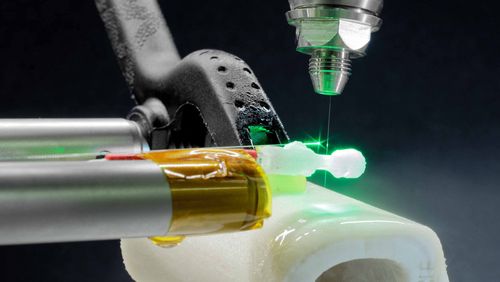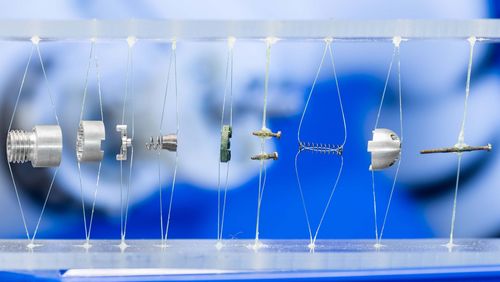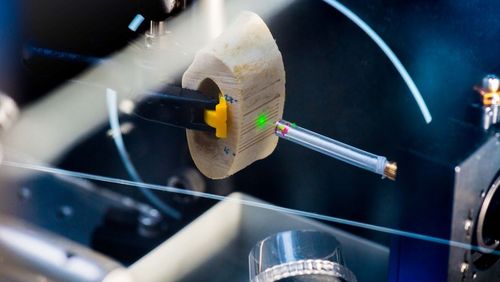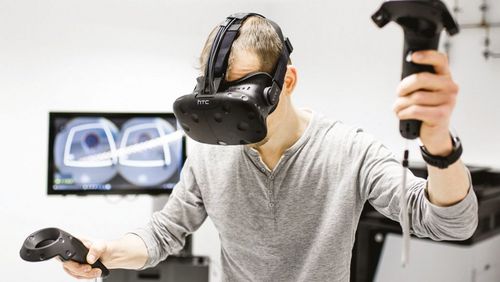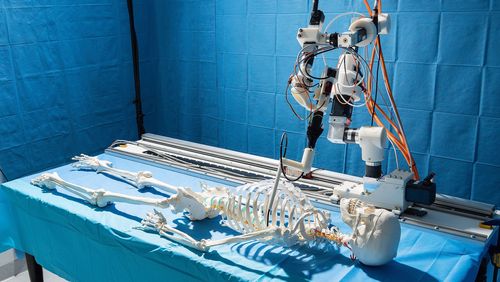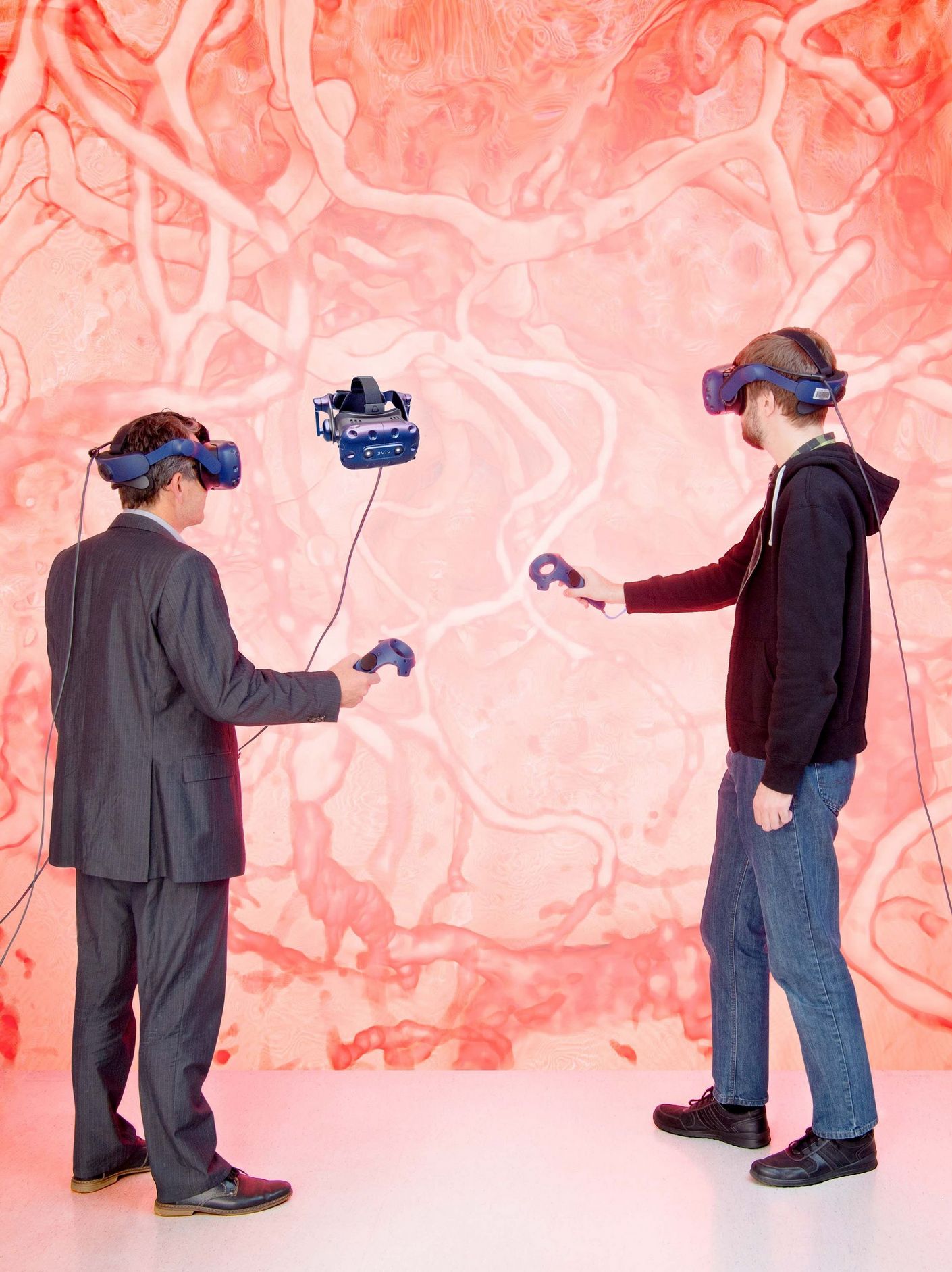
MIRACLE and other marvels of innovation
Talk by MIRACLE project leader Prof. Dr Philippe Cattin, Department of Biomedical Engineering, University of Basel
December 2019
Close by, surgeons and engineers gathered around Prof. Zeilhofer, Associate Vice President Innovation at the University of Basel, 20 years ago to discuss how surgical procedures can be made safer, gentler and more precise. Here and now I would like to tell you what this project has to do with Michelangelo and the Sistine Chapel in Rome.
Zeilhofer and his team subsequently developed - with the support of the Swiss National Science Foundation - planning and simulation software with which it was possible to predict what the patient would look like after the operation in the event of bone changes in the jaw-face area. All developments were meticulously documented, scientific publications published, doctoral theses defended, results validated and retrospectively verified on patient data. The simulations were amazingly accurate... but only if the bone cuts were performed exactly as planned by the computer.
However, this was often not possible because the techniques used to separate bone in the operating room were too coarse and inflexible. The software was, so to speak, ahead of the hardware. Basically, today's modern bone saws still look like they did in the Middle Ages. And the physical principle of how the bone is separated has not changed over the millennia. You still take a hard object and rub it on the bone to blow off parts of it. With this primeval method we could rarely achieve the great results we had seen in the simulations.
In search of a better method, we decided 15 years ago to try it with laser beams. When we started researching, however, the conditions were not really ideal. In 1972, a postdoctoral fellow in Germany had "proven" that bones cannot be cut with laser without charring. However he came up with it, but because of this "proof" it was practically impossible to get research projects financed in this area for 30 years.
Nevertheless, we - equipped with the necessary portion of naivety - set about the project to make this "impossible" miracle possible... And indeed, 2 months ago, here in Basel, the upper jaw of a patient was cut off for the first time in the world with a robot-controlled laser for a conversion osteotomy with millimeter precision. So the proof to the contrary has begun and the German postdoctoral fellow (in the meantime he has been appointed professor) - for the benefit of the patients - has been refuted.
Fine. But what does all this have to do with Michelangelo now? In 1508, Pope Julius II called Michelangelo to Rome to repaint the ceiling of the Sistine Chapel with motifs of the 12 Apostles and the Last Judgement. Michelangelo did not want to accept the commission at first. This was partly because Michelangelo saw himself as a sculptor and not as a painter, but also because he had a tense relationship with the Pope and argued with him about the motifs and content of the pictures to be painted. The dispute was only resolved when the Pope gave Michelangelo a completely free hand. He recognized Michelangelo's outstanding abilities and wanted the chapel painted by him. He therefore took a great risk, placed all his trust in Michelangelo, assured him of the financing and, without consultation and knowledge, granted "whatever Michelangelo deemed appropriate". Michelangelo was given free rein to design the ceiling of the Sistine Chapel. 4 years later, in 1512, the masterpiece was presented to the public. And the strategy of Pope Julius II was successful. Today, the Sistine Chapel belongs to the small handful of the greatest and most famous works of art in the world.
The link between this story and laser bone ablation is that it sometimes takes trust to create great things. Because just as Michelangelo must have felt when the Pope gave him free rein for the design of the Sistine Chapel, so Prof. Zeilhofer and I felt when the Werner Siemens Foundation expressed their trust in us 5 years ago and financed the MIRACLE project.
With the MIRACLE project, the Werner Siemens Foundation has given us at the Department of Biomedical Engineering at the University of Basel the opportunity to work on the next generation of robot-guided laser osteotomes, a minimally invasive laser osteotome. This is what the name MIRACLE stands for which means "Minimally Invasive Robot-Assisted Computer-guided Laser OsteotomE".
Together with postgraduates, doctoral students and master students, who come from all over the world, up to 50 researchers are working at times to develop the bone sheath of the future here in Basel.
In order to advance this MIRACLE development, we looked at the entire surgical process of bone cutting, from the planning of an operation to the automatic execution of the cut with the robot. And whenever a technology was missing or was not efficient enough for the physicians, we have thought up a solution in the MIRACLE project or are at least still in the process of developing it.
So we developed an efficient method to plan the bone cuts with the help of Virtual Reality.
We are also working on depth control and real-time tissue characterization to avoid injuring healthy tissue with the laser.
Recently, we have also been able to measure the temperature distribution while cutting with the help of the depth laser and monitor it during the procedure.
We also developed a new sensor concept for the very accurate determination of joint angles in robots/machines which is not only interesting for the medical industry but also for the machine industry.
From technologies - developed in the MIRACLE project - in the meantime already 3 companies have been developed and many patients in Basel but also in the whole of Switzerland have already profited from MIRACLE technologies in their treatments.
Everything that the MIRACLE project - now in its mid-term - has already achieved and will continue to achieve is only possible because the Werner Siemens Foundation has placed its full and unrestricted trust in us. That is what this project has in common with Michelangelo and the Sistine Chapel. Without generous, visionary patrons, the really great innovations cannot be created. Don't get me wrong, I don't want to equate the MIRACLE project with the Sistine Chapel. Time has yet to show how groundbreaking the solutions developed in the MIRACLE project really are. I would just like to mention the fact that the unheard, the unexpected and the really new can only come into being if donors trust people, knowing that they will make something great out of it.
And this is also the crucial difference to the traditional, complementary donors such as the Swiss National Science Foundation. The Swiss National Science Foundation uses the project descriptions as a basis for most of its funding. The people to whom the money goes only play a subordinate role. If a project proposal goes too far beyond the current "knowledge horizon", it may be rejected in the review process because the success of the project cannot be proven with sufficient certainty. That is why courageous ideas also need donors who do not have to justify themselves to anyone, but can rely on their feelings.
The Swiss National Science Foundation cannot simply say, "I know him/her, he/she can do it, even if a postdoctoral fellow 47 years ago proved that it is impossible". But you can. And it is precisely this that makes you an important and decisive force in keeping Switzerland in the forefront of the international innovation race. Research “off-the-beaten-track” may be riskier, but it can push into areas that others consider unattainable.
With this in mind, I would like to thank you sincerely for the trust you have placed in us researchers. And I would like to thank our Rector, Prof. Andrea Schenker-Wicki, for the confidence she has placed in me to hold a speech here.
Prof. Dr Philippe Cattin
